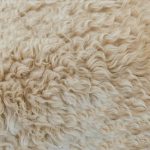When it comes to caring for your French Terry garments, you're probably wondering what the best approach is to keep them looking their best. You've likely heard that washing them inside out and using cold water is a good start, but what about drying and storing them? Do you know the best way to prevent pilling and snagging? By following the right care instructions, you can extend the life of your French Terry garments and keep them looking like new. But what are the specifics of these care instructions, and how can you ensure you're taking the best care of your garments?
Table of Contents
Washing French Terry Garments
When it comes to washing French Terry garments, start by turning them inside out to protect the fabric from friction and prevent pilling. This simple step can make a big difference in maintaining the quality of your garment.
Next, check the care label for specific washing instructions, as some French Terry garments may require dry cleaning or special care.
If machine washing is recommended, use cold water and a mild detergent that's designed for washing delicate or woolen items. Avoid using harsh detergents or those that contain bleach or fabric softener, as these can damage the fabric. Gently place the garment in the washing machine and select a gentle cycle with a slow agitation setting.
It's also a good idea to wash your French Terry garments separately from other clothes to prevent snagging or pilling.
If you need to hand wash your garment, use cold water and a mild detergent, and gently swish the garment around before rinsing thoroughly. Avoid wringing or twisting the garment, as this can cause stretching or distortion.
Drying and Shaping Techniques
When you're done washing your French Terry garment, it's time to focus on drying and shaping techniques to maintain its texture and fit.
You'll want to air dry it, rather than relying on machine drying, to prevent shrinkage and damage.
Air Dry Techniques
One of the best ways to dry your French terry garments is to air dry them, which helps prevent shrinkage and maintains their soft texture.
To air dry, start by gently removing excess water from the garment without wringing or twisting it.
You can do this by laying the garment flat on a towel and gently blotting it with another towel.
Next, hang the garment on a padded hanger or a drying rack, making sure it's not crowded or bunched up.
This allows air to circulate around the garment, promoting even drying.
When air drying, it's essential to keep the garment away from direct sunlight and heat.
Direct sunlight can cause fading, while heat can shrink or misshape the fabric.
Instead, dry your French terry garments in a well-ventilated area with a consistent temperature.
You can also use a fan to speed up the drying process, but be cautious not to blow hot air directly onto the garment.
Reshape While Damp
To prevent French terry garments from losing their shape during the drying process, reshape them while they're still damp, smoothing out wrinkles and laying them flat to maintain their original dimensions. This step is crucial in preserving the fabric's texture and appearance. By reshaping your garment while it's still damp, you'll help prevent shrinkage and ensure it retains its original fit.
Here's a step-by-step guide to reshaping your French terry garments:
| Step | Action | Tips |
|---|---|---|
| 1 | Lay the garment flat on a towel | Gently remove excess water without wringing or twisting |
| 2 | Reshape the garment to its original dimensions | Use a ruler or measuring tape to ensure accuracy |
| 3 | Smooth out wrinkles and creases | Use a soft brush or your hands to gently smooth out wrinkles |
| 4 | Allow the garment to air dry | Avoid direct sunlight or heat to prevent fading or shrinkage |
Avoid Machine Drying
After reshaping your French terry garment while it's still damp, it's equally important to avoid machine drying, as the high heat and tumbling action can cause shrinkage, damage the fabric's texture, and compromise its overall appearance.
You'll want to air dry your garment instead, which may take longer, but it's a safer and more gentle way to preserve the fabric's quality.
When air drying, lay your French terry garment flat on a towel, smoothing out any wrinkles or creases.
You can also hang it up, but make sure it's not stretched or pulled in any way, as this can cause distortion.
Avoid direct sunlight, as it can cause fading or discoloration.
If you're in a hurry, you can use a fan to speed up the drying process, but keep it on a low setting to prevent overheating.
Removing Stains and Spills
When tackling stains and spills on French terry garments, act quickly to prevent them from setting in and becoming tougher to remove. The sooner you treat the stain, the better chance you have of removing it completely. Start by gently blotting the stain with a clean cloth or paper towel to remove any excess staining substance.
| Stain Type | Removal Method |
|---|---|
| Food and drink | Blot with a clean cloth, then apply a small amount of mild detergent directly to the stain. Gently rub the stain with a soft-bristled brush and rinse with cold water. |
| Ink | Apply a stain remover or a mixture of equal parts water and white vinegar directly to the stain. Let it sit for 10-15 minutes before rinsing with cold water. |
| Grease and oil | Apply a small amount of baking soda directly to the stain and let it sit for 30 minutes to an hour. Then, rinse with cold water and apply a mild detergent if needed. |
Remember to always test a small, inconspicuous area of the garment before applying any stain removal methods to ensure the best results.
Preventing Pilling and Snagging
By taking a few simple precautions, you can significantly reduce the risk of pilling and snagging on your French terry garments. Pilling occurs when fibers break off and mat together, creating unsightly balls of fluff, while snagging happens when a thread or fiber gets caught on something and pulls loose. To prevent these issues, it's essential to handle your French terry garments with care.
- Avoid using fabric softener or bleach, as these can weaken the fibers and make them more prone to pilling and snagging.
- Don't overload your washing machine, as this can cause friction and abrasion that can lead to pilling and snagging.
Ironing and Steaming Methods
Now that you've learned how to prevent pilling and snagging, it's time to move on to ironing and steaming methods.
When it comes to French terry garments, getting the temperature just right is crucial, so you'll want to make sure you're using the correct ironing temperature settings.
Before you start ironing, let's cover the basics of ironing temperature settings and explore the steaming techniques that'll help you achieve a smooth, wrinkle-free finish.
Ironing Temperature Settings
The ideal temperature setting for ironing French terry garments depends on the type of fabric and the level of heat it can withstand. As a general rule, it's best to use a medium to low heat setting. This will help prevent scorching or damaging the fabric.
If you're unsure about the right temperature setting, you can always check the care label on your garment for specific instructions.
- For cotton-rich French terry fabrics, use a medium heat setting (around 300-320°F/150-160°C).
- For synthetic or blended French terry fabrics, use a lower heat setting (around 250-280°F/120-140°C).
Remember to always use a gentle touch and avoid applying too much pressure, as this can cause creases or damage to the fabric. By following these guidelines, you can ensure that your French terry garments look their best and last longer.
Steaming Techniques Explained
Steaming your French terry garments can be just as effective as ironing, if not more so, in removing wrinkles and creases. Steaming is a great way to relax fibers and remove wrinkles without scorching or damaging the fabric.
To steam your French terry garments, you'll need a handheld steamer or a standing steamer. Fill the steamer with distilled water, and make sure the garment is hung on a sturdy hanger.
Hold the steamer about 6 inches away from the garment, and move it slowly and evenly over the fabric. Don't hold the steamer in one spot for too long, as this can cause water spots.
You can also use a steaming attachment on your iron, but be careful not to scorch the fabric. Steaming is especially effective for removing wrinkles from French terry garments with a lot of texture or pile.
It's also a great way to freshen up your garments between washes. By following these simple steaming techniques, you can keep your French terry garments looking their best.
Storage and Folding Tips
Properly storing your French terry garments involves folding them in a way that prevents creases and saves space. You want to fold your garments in a way that allows them to breathe and maintain their texture.
To do this, you can use a folding technique that involves folding the garment in thirds, both horizontally and vertically. This will help prevent creases and allow the garment to lie flat.
When storing your French terry garments, it's also important to consider the following:
- Store them in a cool, dry place away from direct sunlight.
- Avoid stacking them on top of each other, as this can cause creases and damage to the fabric.
Special Care for Colored Fabrics
If you own French terry garments with colored fabrics, you'll want to take extra precautions to maintain their vibrancy and prevent fading. When washing colored French terry, you should always check the care label first. Some colored fabrics may require dry cleaning, while others can be machine washed.
If you can machine wash, use cold water and a mild detergent to prevent color bleeding. It's also a good idea to wash colored garments separately from whites and light-colored items.
Avoid using bleach or harsh chemicals, as these can damage the fabric and cause colors to fade quickly. If you need to remove stains, use a gentle stain remover and test it on an inconspicuous area first.
When drying, don't hang your colored French terry garments in direct sunlight, as this can cause fading. Instead, hang them indoors or dry them flat. By taking these precautions, you'll be able to enjoy your colored French terry garments for a longer period while maintaining their original color and vibrancy.
Regular maintenance will also prevent colors from fading, keeping your garments looking great wash after wash.
Frequently Asked Questions
Can French Terry Garments Be Dry Cleaned?
You can check the care label, but generally, it's best to avoid dry cleaning French terry garments as it can damage the fabric. Instead, you'll want to machine wash them in cold water with a mild detergent.
How Often Should I Wash My French Terry Robe?
You should wash your French terry robe as needed, but not too frequently, as over-washing can cause pilling and reduce its softness. Spot clean stains and wash it every 5-7 wearings.
Can I Use Fabric Softener on French Terry Towels?
When it comes to your French Terry towels, you shouldn't use fabric softener as it can reduce their absorbency and make them less soft. Instead, opt for a mild detergent to keep them clean and fresh.
Are French Terry Garments Suitable for Hand Washing?
You can definitely hand wash your French terry garments, but it's crucial to use cold water and a mild detergent. Gently swish the garment around, then let it soak for about 15 minutes.
Can I Bleach White French Terry Socks?
You can't bleach white French Terry socks as it may damage the fabric or cause discoloration. Instead, you should wash them in cold water with a mild detergent to preserve their softness and texture.
- How Does Ring Spun Cotton Affect Garment Fit and Shape Retention? - August 13, 2024
- What Are the Challenges in Producing Ring Spun Cotton? - August 13, 2024
- Is Ring Spun Cotton Suitable for Plus-Size Clothing? - August 13, 2024







